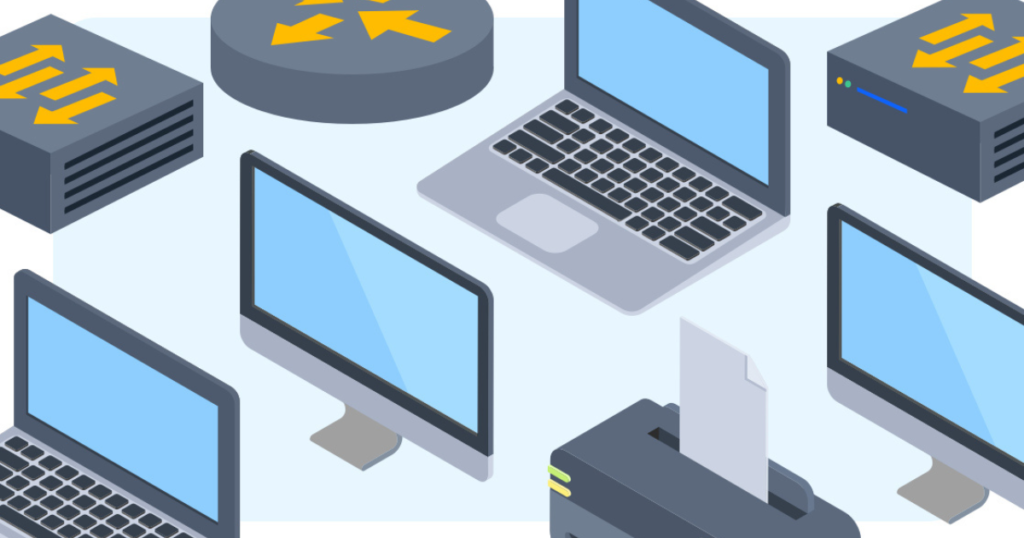In today’s fast-paced digital world, the phrase “moving through network” might sound technical, but it’s an essential concept in how data travels across the internet and communication systems. Simply put, “moving through network” refers to the process of transferring data or information from one point to another within a network, often through various routes and systems. This movement is crucial for connecting people, devices, and systems worldwide. Whether you are streaming a movie, sending an email, or accessing a website, data moves through networks to make it happen.
In this blog, we’ll explore what it means for data to move through a network, how it works, and why it’s important.
What Is A Network?
Before diving into how data moves through a network, let’s first understand what a network is. A network is essentially a collection of computers, servers, devices, or systems that are interconnected. These connections allow them to communicate and exchange information. There are many types of networks, including:
- Local Area Networks (LANs): Small, localized networks within homes, schools, or businesses.
- Wide Area Networks (WANs): Larger networks that cover broader areas like cities or even countries.
- The Internet: The largest network in the world, connecting billions of devices globally.
The Role Of Packets In Network Movement
When we talk about “moving through network,” we are usually referring to the movement of data packets. Data packets are small chunks of information that are broken down from larger files or messages. When you send a file or visit a website, the data is broken into packets, and these packets travel through the network to reach their destination.
Each packet contains vital information such as:
- The Source Address: Where the packet originated.
- The Destination Address: Where the packet needs to go.
- Data Payload: The actual data or part of the message being sent.
- Error Checking Information: Used to ensure the data hasn’t been corrupted during transmission.
How Do Data Packets Move Through A Network?
Data packets don’t just travel in a straight line from one computer to another. Instead, they move through a series of interconnected routers, switches, and devices that help guide them to their destination. The process of moving through a network can be broken down into several key steps:
- Source Device: The data begins its journey on the device that created it, like a computer or smartphone.
- Local Network: The data first moves through the local network, often a LAN. This could involve moving through a router or switch.
- ISP (Internet Service Provider): If the data is moving beyond the local network, it is sent to an ISP, which is responsible for sending the data to the wider internet.
- Internet Backbone: The data may travel through several large networks, often referred to as the internet backbone, which connects ISPs across the globe.
- Destination Network: Finally, the data reaches its destination network, where it is reassembled and delivered to the recipient, such as a website or a computer.
The Traffic Controllers
Think of routers and switches as the traffic controllers of the network. Routers direct data packets between different networks, while switches are responsible for directing data within a specific network, like a home or office. They make sure data takes the fastest or most efficient route to its destination. When data is moving through a network, routers and switches determine the path it takes based on factors like traffic congestion, the distance between points, and network speed.
The Importance Of Moving Through A Network Efficiently
Efficient data movement is vital for many reasons:
- Speed and Performance: If data can move through the network quickly, you’ll experience faster internet speeds and better performance when using online services.
- Reliability: Networks need to ensure that data arrives accurately and intact. Any disruption in movement could result in lost or corrupted data.
- Security: When data moves through a network, it needs to be protected from hackers or unauthorized access. Network security protocols, such as encryption, help keep data safe.
The Different Types Of Networks Data Moves Through
There are various types of networks through which data can move. Here are some examples:
- Wired Networks: Data moves through physical cables like Ethernet or fiber optic cables. These are often used in homes, businesses, or data centers for fast and reliable internet connections.
- Wireless Networks: Data moves through radio waves. This includes Wi-Fi, which you might use at home, or cellular networks like 4G and 5G that allow data to move between mobile devices.
- Satellite Networks: Data moves between Earth and satellites in space, often used for internet access in remote areas.
- Peer-to-Peer Networks (P2P): In P2P networks, data moves directly between devices without needing a central server, often used for file sharing.
Challenges In Moving Data Through Networks
Although modern networks are incredibly efficient, there are still challenges that can affect the movement of data. These include:
- Network Congestion: Just like traffic jams, too much data moving through a network at once can cause delays.
- Latency: The time it takes for data to move from one point to another. Latency can be affected by the distance between the source and destination.
- Packet Loss: Sometimes, packets are lost during their journey, resulting in incomplete data being received. Networks often have mechanisms in place to request lost packets be re-sent.
- Security Threats: Hackers can attempt to intercept data as it moves through the network, leading to potential breaches or data theft.
The Future Of Network Movement
As technology continues to evolve, the way data moves through networks is also advancing. Faster networks like 5G and fiber optics are making data movement quicker and more efficient. Additionally, new technologies like quantum computing and artificial intelligence are expected to further revolutionize how data moves through networks, making them even faster, more secure, and reliable.
Moreover, with the growing Internet of Things (IoT), more devices than ever are connected to networks, from smart homes to wearable technology. As the number of devices increases, so will the need for efficient data movement across networks.
Conclusion
In summary, “moving through network” refers to the process of data traveling from one point to another through a series of interconnected devices and systems. Whether you’re sending an email, browsing a website, or streaming a video, this data movement is happening behind the scenes. Understanding how data moves through a network can give you a better appreciation of the complex systems that keep our digital world running smoothly.



